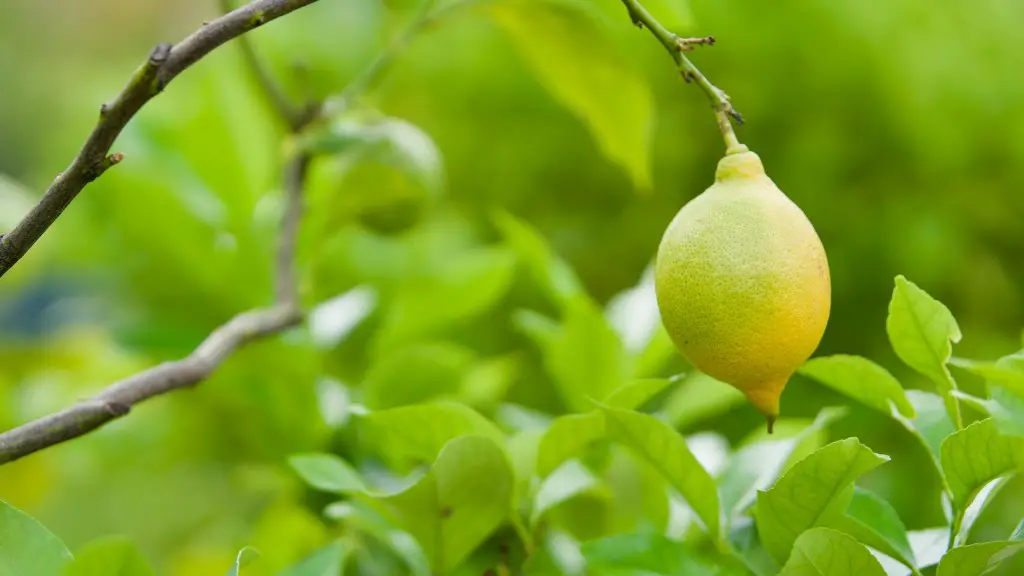Indoor Plants: Benefits and How to Choose
Having houseplants is a great way to add life and beauty to any space. As well as providing aesthetic appeal, plants can improve air quality and create a soothing atmosphere. But which plants are suitable to be kept indoors? One of the most hardy and easy-care varieties is the palm tree.
Palm trees tend to be attractive, slow-growing, and relatively low-maintenance. They are also a great way to introduce a tropical look into a room, so popular in many homes. However, before purchasing a palm tree, certain considerations need to be taken into account.
Climate Considerations
It is important to remember that any type of palm tree requires a lot of care and attention to thrive indoors. The key consideration is providing a suitable climate. Most palms prefer bright, indirect light and warm temperatures. Inside, the temperature should be around 25 to 30 degrees Celsius, with relative humidity levels kept as high as possible. As long as these conditions can be met, it is possible to keep a palm as an indoor plant.
However, if the climate inside is too dry, the palm may experience leaf loss, yellowing of foliage, and stunted growth. It is also important to ensure that the pot has proper drainage so as to prevent root rot. If these requirements cannot be met, it is advisable to look into other types of plants.
Soil and Fertilizer
Another important requirement for indoor palms is the soil in which they are planted. While standard potting soil may work for some varieties, other palms such as sago palms and palmettos prefer more neutral soil. To create a suitable soil, many experts recommend combining standard potting soil with perlite, peat moss, and coarse sand.
Another important point to consider is fertilizer. Many outdoor palms require a fertilizer to thrive, but it is important to remember that indoor palms should not be over-fertilized. Too much fertilizer can damage the roots and lead to yellowing of the foliage. As a general rule, a low-level fertilizer should be applied once every two to three months. Finally, palms should be watered on a regular basis and the soil kept moist at all times.
Common Types of Indoor Palms
Common types of palms that can be kept indoors include the parlor palm, bamboo palm, cat palm, and ponytail palm. The parlor palm is an evergreen perennial that can grow up to 10 feet tall and boasts glossy, dark green foliage. It is easy to care for and is ideal for anyone looking for a low-maintenance palm for their home. The bamboo palm is another popular choice as its graceful fronds can grow up to ten feet in length.
The cat palm has feathery fronds and can tolerate lower light conditions well. Lastly, the ponytail palm is a desert-dwelling species with a thick, bulging trunk and feathery, arching fronds that can grow up to six feet tall. All of these palms can survive in the comfort of a home with the right amount of care.
Indoor Trees: Growing and Trimming Tips
In order to keep a palm healthy and attractive, it is important to prune dead or damaged leaves and to remove diseased or decayed fronds. This should be done with care and patience to avoid damaging the plant. If a tree grows too tall for its pot, it can be re-potted. However, repotting should be done with caution to avoid stressing the tree and damaging its roots.
When repotting a palm, however, it is best to use a larger pot than the one it was in originally so as to give the tree enough room. Additionally, the pot should have good drainage and a layer of gravel at the bottom. And while the process of transferring a palm to a new pot can be a bit tricky, it is worth the effort in order to ensure the tree’s health and vitality.
Indoor Trees: Pest Management
Finally, proper pest management is important for keeping a palm healthy. Common indoor pests such as mealybugs, scale, and mites can wreak havoc on a palm if not properly taken care of. It is important to inspect the tree for signs of pests and to take action as soon as possible if any are detected. Fortunately, there are a number of insecticides and fungicides available that are suitable for use on indoor palms.
Overall, palms trees can add a lot of life and beauty to any indoor space. As long as the temperature, light, soil, and fertilizer requirements are met, these trees can thrive. In addition, many of these palms are considered to be a low-maintenance, easy-care variety, making them an excellent choice for anyone looking to add natural beauty to their home.
Indoor Trees: Light Requirements
When it comes to selecting an indoor palm, it is essential to consider the amount of light available in the space. Generally, most palm varieties appreciate bright, indirect sunlight and thrive in locations that receive six to eight hours of intense, indirect lighting per day. Additionally, some varieties are more tolerant of low-light conditions than others.
For instance, the bamboo palm can survive in light levels as low as 40 lux, while the parlor palm prefers intense, indirect lighting and can become leggy if placed in areas with low light. Most of these plants can also be moved outdoors in summer, as long as they are gradually acclimated to direct sunlight.
Indoor Trees: Pruning and Grooming
In addition to light and climate considerations, regular pruning and grooming is essential for keeping a palm looking neat and healthy. Pruning should be done with care, taking only dead and diseased fronds. In addition, many palms benefit from regular grooming, such as wiping down the fronds with a damp cloth to remove dust and debris.
It is also important to remember that palms require regular feeding in order to stay healthy. Most experts recommend using a fertilizer specifically designed for palms every two to three months. Additionally, palms are usually sensitive to over-watering, so it is important to water sparingly and allow the potting soil to dry out between waterings.
Conclusion: Is a Palm Tree Suitable for an Indoor Plant?
Overall, the palm tree is an excellent choice for an indoor plant. As long as the climate, soil, and fertilizer requirements are met, a palm can make a great addition to any home. However, it is important to remember that a palm requires regular maintenance, such as pruning and grooming, to keep it looking vibrant and healthy. With the right care, a palm can be a stunning addition to any indoor space.




